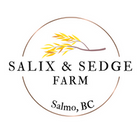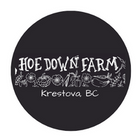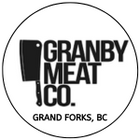March 10th, 2022
Emily Woody
FARM NEWS

As I’m sure you’ve noticed, prices are going up 😓
From gas to ingredients to kitchen rental time, our operating costs are becoming more expensive. Because of this we’ve had to take a hard look at our operating costs to ensure that we’re running a sustainable business that is able to pay us a living wage.
We did a thorough cost analysis on all of our baked goods and realized that we had to make some adjustments. Some of our baked goods have gone up slightly, some have stayed the same, and a few have even gone down in price. However, we had to raise the prices significantly on our Bake-at-home cookies.
A major cost for cookies is the jar and the lid, which costs a total of $2. We would like to offer a jar refund program to bring down the cost by $2 if the jar and lid are returned to us.
To return your jars simply leave them outside with any other returnable (egg cartons, bags or boxes). When we pick them up we will send you a $2 refund on your next order 🙂

When one dickhead in Russia can make your grocery bill in Canada more expensive, you know something is very wrong with our food system.
“Pandemic-induced supply bottlenecks and the rising cost of natural gas, a key production input, are among the factors sending fertilizer prices soaring. Add disruptions stemming from Russia’s invasion of Ukraine, and consumers will be paying more for almost every plate of food.“
World food prices jumped 28 per cent in 2021 to their highest level in a decade with no signs of letting up. The reason food prices are increasing is because our food supply chains are too long, too centralized and require too many inputs such as synthetic fertilizers, pesticides, herbicides, insecticides and fuel. With this fact becoming more obvious by the day, what can we do as a community to get off of this rollercoaster?
Locally-grown food has a short supply chain (our farm to your door). Most of the inputs we need are sourced locally, such as compost and manure. When there are many thriving small scale farms in a community and one of them has to close down for whatever reason, it’s impact on our local food system is minimized because food production is decentralized. The answer to how we protect ourselves from food shortages and price increases is locally-grown food.
Every time you buy locally-grown food you are investing in your community's food security. You're investing in more stable food prices. You’re investing in your local economy. You’re investing in your safety.
As a small mountain community we need to start taking these red flag events more seriously. When we become too dependent on the global food system and on imported food our local food security becomes more vulnerable.
This is why we need to start making local food our first choice, not our last resort. And not just for a week or for a month, but indefinitely. The quality of our future depends on it.
Article by Bloomberg News
NEW PRODUCTS

Reusable Vegetable Storage Bags 💚
Keep your produce vibrant for up to two weeks!
Our Vejibags keep your vegetables fresh and crisp far longer than vegetables stored in a plastic bag, reducing food waste and saving you money! It works for loose leafy greens, heads of lettuce, kale, beets, carrots, broccoli, celery, eggplant, green beans, mushrooms and pretty much any other veggie!
While conventional plastic bags and boxes suffocate vegetables by trapping stale air and ethylene gas, our damp cotton bags keep moisture-loving vegetables alive and crisp in a high humidity, breathable environment.
Our vegetable storage bags are made from undyed, unbleached, 100% organic french terry cotton, grown by the Texas Organic Cotton Marketing Cooperative, and hand sewn by employee-owned Opportunity Threads, in Valdese, North Carolina.
Available in:
Standard 11” x 12”. Great for carrots, cucumbers, peppers, baby spinach, salad greens, arugula, heads of lettuce, Asian greens.
Large 11”X17”. Great for kale, celery, zucchini, heads of lettuce and larger amounts of loose leafy greens.

The Sourdough School: The Ground-Breaking Guide to Making Gut-Friendly Bread (Hard Cover)
We've read a lot of books on sourdough over the years and this is one of our favorites. It has easy to follow instructions and is a must-have guide to anyone who is trying to learn or improve their sourdough baking.
Achieve the delicious crust and addictive tang of a homemade sourdough loaf with this comprehensive guide from expert Vanessa Kimbell.
At her renowned Sourdough School, Vanessa has taught countless students the secrets of this healthy, more easily digestible bread, and now she has compiled her teachings for the home baker.
From creating your own starter from scratch, you'll then move on to basic breadmaking techniques, before progressing to using sprouted grains and experimenting with flavors to produce Fig and Earl Grey and Cherry Plum loaves.
With step-by-step photography, detailed instructions, specialist advice and Vanessa's indispensable encouragement, The Sourdough School celebrates the timeless craft of artisan baking.

New & Improved Sourdough Starter Kit 🍞
Our updated Deluxe Sourdough Starter Kit now includes everything you need to begin your journey sourdough bread making!
Deluxe Sourdough Starter Kit now Includes:
- 50 year old whole wheat sourdough starter
- 5 lb bag of our freshly milled, organic Had Red Spring bread flour
(This is enough to make 4 loaves of bread and to feed your starter).
- Sourdough beeswax-lined bread bag (comes in red or charcoal)
- Large bowl cover (comes in blue or red)
- Jar cover (comes in blue or red)
- The Sourdough School: The Ground-Breaking Guide to Making Gut-Friendly Bread (Hardcover)

We have lots of fresh spinach again! It’s warm enough now that it’s started to grow again in our hoop house. Woohoo!

Local honey is back in stock!




